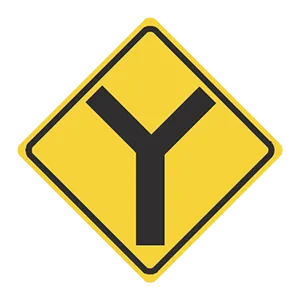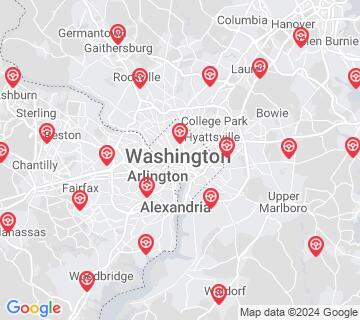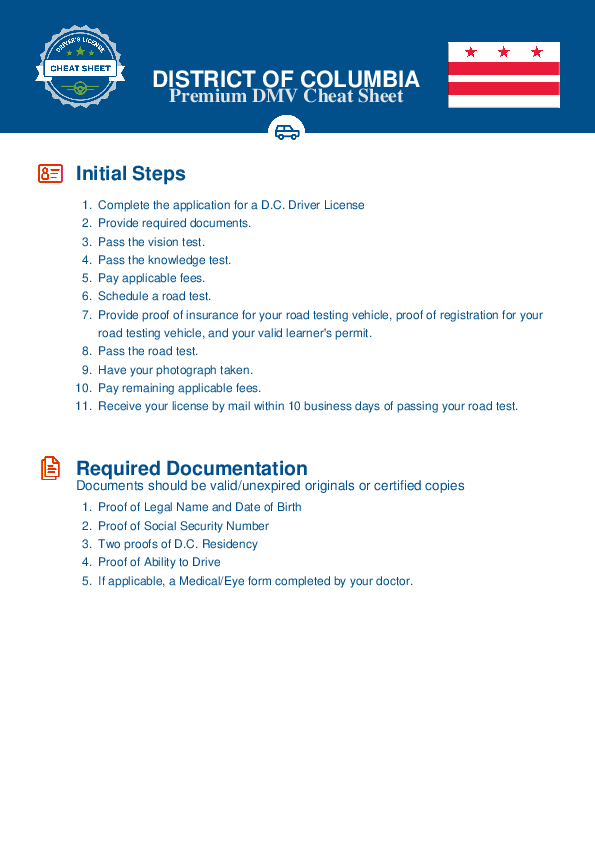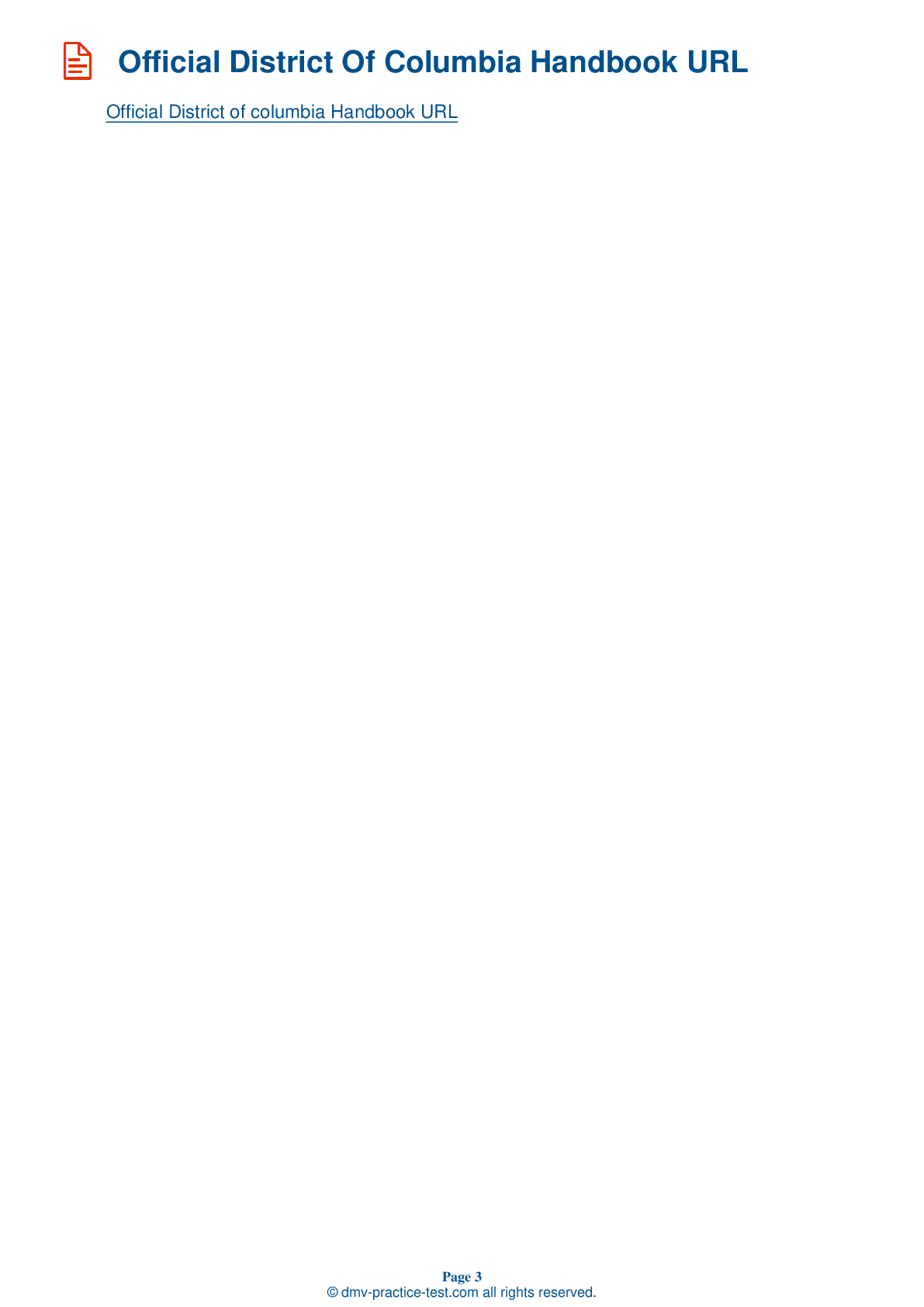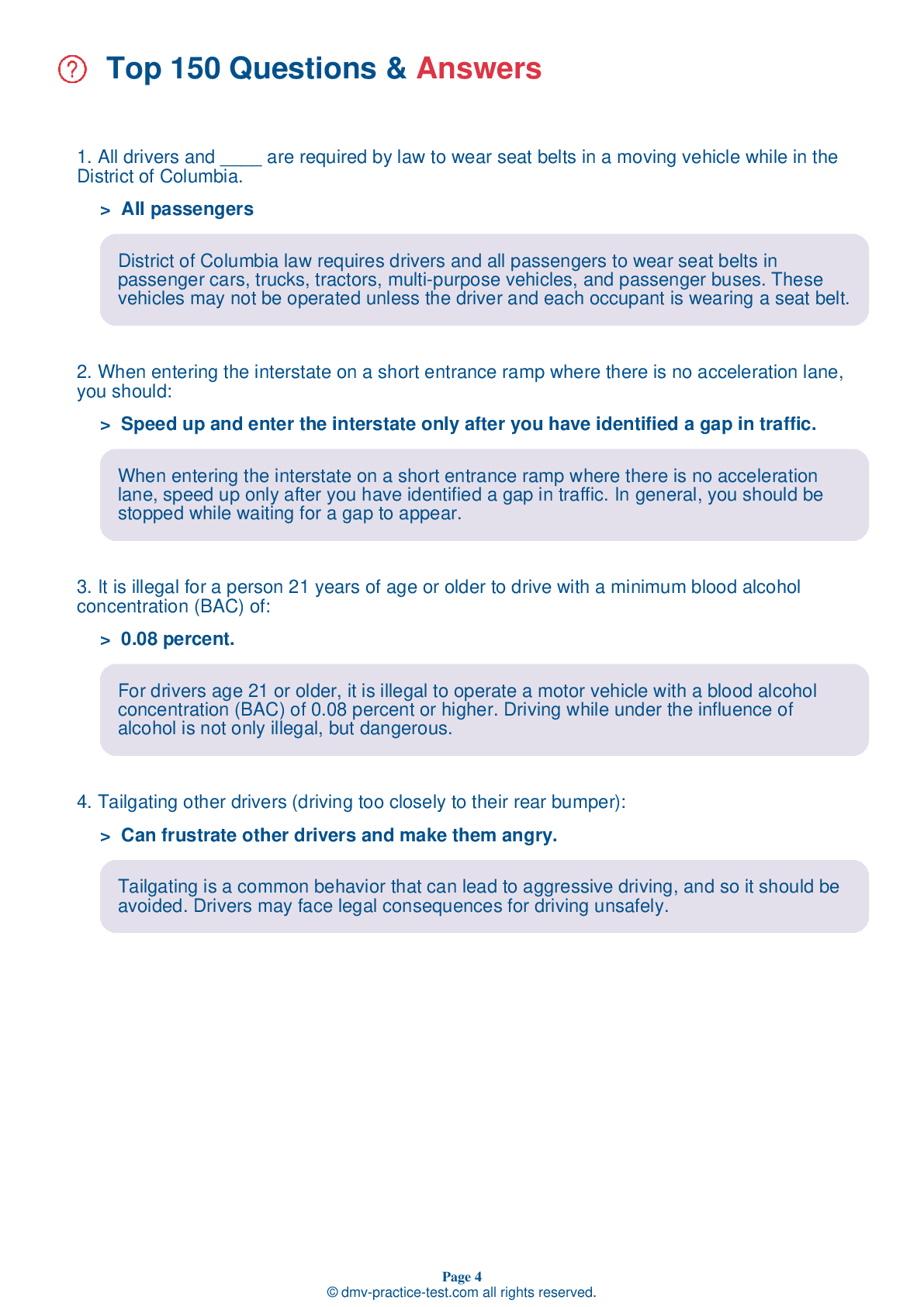FREE District Of Columbia DMV Practice Test #12 Page 3 of 3
This set of District Of Columbia DMV practise tests was been updated for January 2026. It includes questions based on the District Of Columbia Driver Handbook's most significant traffic signs and laws for 2026. Use actual questions that are very similar (often identical!) to the DMV driving permit test and driver's licence exam to study for the DMV driving permit test and driver's licence exam.
On the practise exam, each question gets a tip and explanation to help you remember the concepts. The written component of the official DMV test will include questions about traffic rules, traffic signs, and driving statutes, as well as information from the Driver Handbook.
To achieve the required passing grade, you must correctly answer 20 of the 25 questions. Take our DMV practise exam to help you prepare for your District Of Columbia instruction permit or driver's licence.
The DMV exam is available in several languages.
Using any form of testing help will result in an automatic fail, and the DMV may take further action against your driver's licence, so avoid it.
17 . If your car breaks down on a highway, you should:
If your vehicle breaks down on the highway, you should signal before carefully exiting the roadway and turning on your hazard flashers. Get as far off the road as possible and park in a location where other drivers can easily see you. Lift your hood to let other drivers know your vehicle is disabled.
18 . If a road is slippery, maintain a following distance that is:
You need a longer distance to stop your vehicle on a slippery road than you do on a dry road. Maintain an increased following distance when driving on slippery roads.
19 . When parking next to a curb, you should use your turn signals:
Drivers should signal when pulling next to a curb or away from a curb.
20 . If the rear of your vehicle is skidding to the left, you should:
If you begin to skid on a wet or icy road, take your foot off the accelerator, stay off the brakes, and turn your steering wheel in the direction of the skid. However, if you have anti-lock brakes, you should apply your brakes firmly and steer straight ahead.
21 . This road sign means:
